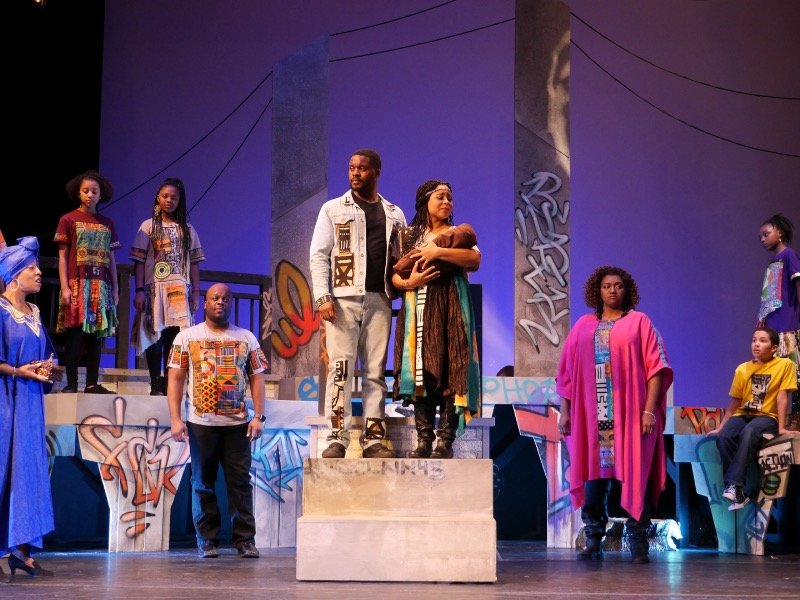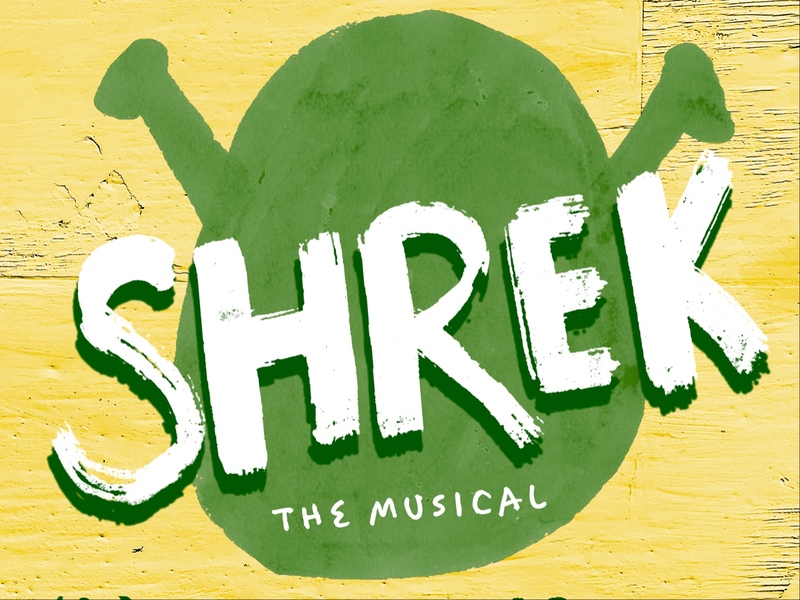"Come on, Mary. Let’s see if you still got it."
I don’t know if Joseph actually said that to his beloved, the Virgin Mary. I don’t remember that passage from any of the scriptures, but I’d like to think that soon after Jesus was born in Bethlehem, his earthly parents celebrated a little bit, maybe by singing and dancing together like they used to.
That line is just one of the ways that Langston Hughes’ "Black Nativity" reinvigorates the classic Christmas story told in the first chapter of Luke, making it decidedly less solemn and more of a reason for joy. Onstage at the Marcus Center for the Performing Arts through Dec. 16, Bronzeville Arts Ensemble’s production channels that joy effectively, setting much of the story in Milwaukee and tracing the evolution of Christian faith in the African American community from its beginning to the present.
This is Malkia Stampley’s third time directing the piece, so it’s not surprising that much of what made it successful previously is carried over into this year’s incarnation. Beverly Echols is back with her distinct costume designs which incorporate bright batik fabrics and traditional African prints with t-shirts, jeans and flowing caftans. An explosion of color that weaves together elements from different cultures and time periods, it’s an exuberant palate that supports the general air of celebration.
Much of last year’s cast is back too, which is good news. Since there are very few spoken lines in the show, "Black Nativity" is a great showcase for accomplished gospel singers such as Camille Hunt, Shawn Holmes and Tasha McCoy. They are joined by two exceptionally talented additions to the 15-person ensemble, Di’Monte Henning as Joseph and Natalie Harris as Mary.
Henning not only has terrific stage presence, every inch an excited, expectant father, his strong vocals shine throughout the show, particularly in "Joy to the World" and "Leak in the Building." Showing off some smooth moonwalking, he’s also a gifted dancer. In choreographed numbers that involve the whole cast, it’s hard to take your eyes off him. And when he asks the audience to stand, do the "choir sway" and sing along, you can’t refuse.
While many Christmas narratives cast Mary as a peaceful and serene vessel for God’s son, in "Black Nativity," she is a vibrant force of nature, embodied fully by Natalie Harris. Ebullient and electric in her excitement about Christ’s birth in the first half of the production, she practically glows. Leading the performers in a step dance, swinging and harmonizing with Henning’s Joseph and proclaiming the good news of Jesus’s arrival, Harris seems unstoppable. Her tonal shift in the second act, when she leads a group of mourners protesting social injustice, is abrupt but complete. Outfitted in denim overalls and red high tops, she delivers a cascading scale version of "This Little Light of Mine" that is heartbreaking.
Tasha McCoy also stands out in the second act as the revival meeting preacher, leading a gospel choir in lively songs of faith such as "Meetin’ Here Tonight" and "Count Your Blessings." She is the leader that chooses joy even on the bleakest days, in contrast to Harris’ despair and anger over violence towards her community.
The cast, which also includes six youth performers, does well with Christopher Gilbert’s upbeat choreography, some adding their own grace notes to the group’s moves. A few dance combinations are impressively complicated, but most are designed to be done successfully by a cast with varying talent levels. Just as the music segues from traditional to contemporary, including rock, blues, jazz, R&B, gospel and hip-hop, the dance pays tribute to many forms. The "Bad Shepherd" sequence is one of the most entertaining.
In the director’s notes, Stampley talks about her choice to pair the Christmas story with the #MeToo Movement saying, "Overcoming adversity and believing (no matter how deep down) that you are a gift to this world and carry greatness in you is Black Girl Magic in all its glory and I have always seen Mary as the poster child for #Black Girl Magic." Nonetheless, references to MeToo – the national call for victims of sexual harassment and abuse to speak up – seem shoehorned into the show. Last year’s nod to the Black Lives Matter movement was much more organic and affecting, though it’s notable for any holiday program to try to address these issues.
Part church service, part gospel concert, part history lesson and part bright light in the darkness of December, "Black Nativity" accomplishes the author’s intent: to blend "melodic intensity, ancient scripture and contemporary problems." I was particularly struck by this on my way home. I was reminded of the actors declaring, "No room!" to Mary and Joseph as they stood in front of the set’s graffiti-laden bridge, while I drove by the growing tent city under the Marquette Interchange.







